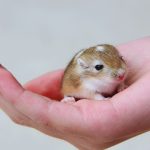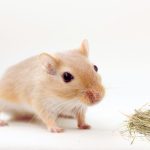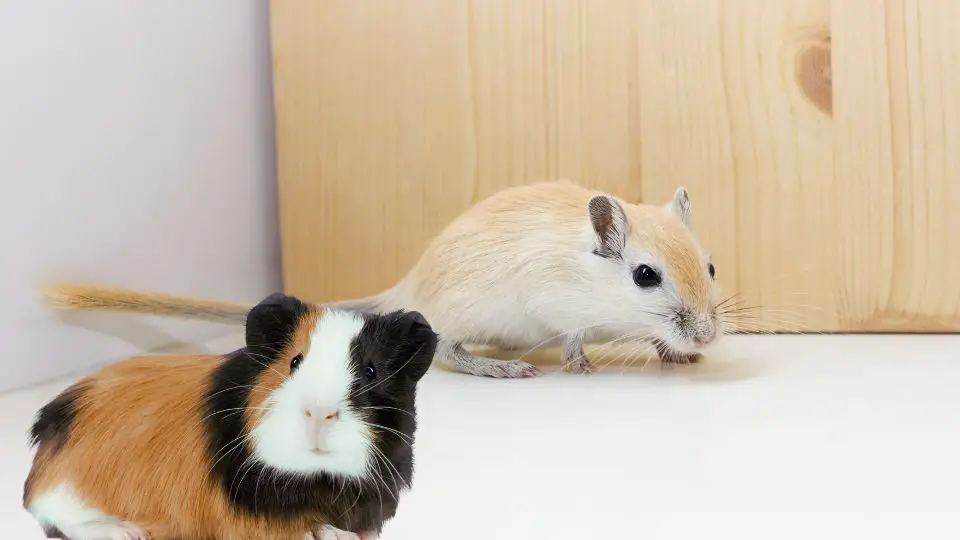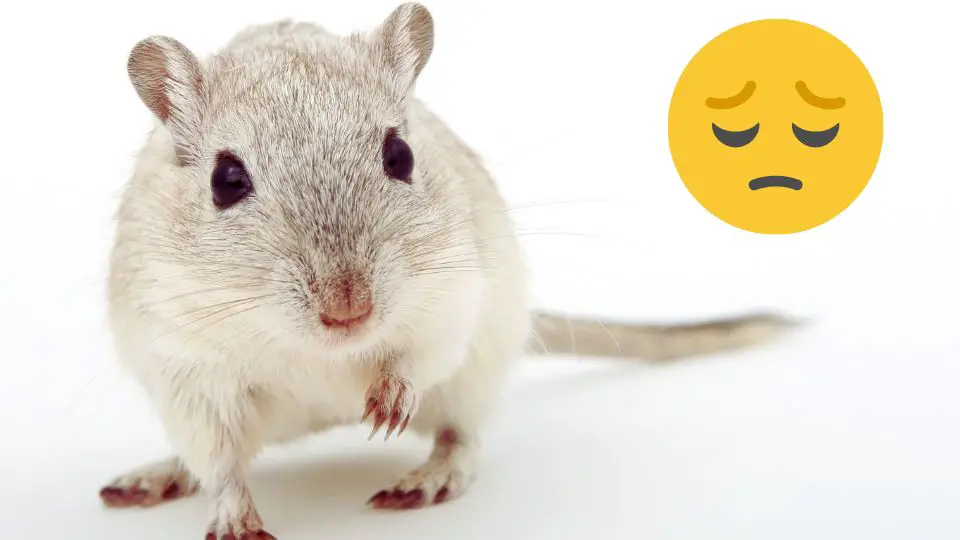Gerbils are fascinating small animals known for their unique ability to intentionally shed their tails. This intriguing behavior, known as “tail autotomy,” raises the question: why do gerbils’ tails fall off?
Gerbils’ tails fall off as a natural defense mechanism. This means that gerbils have the ability to intentionally detach their tails when they feel threatened or in danger. It serves as a way for them to escape from predators or other potential harm. While it may seem alarming, tail loss is a normal and natural occurrence for gerbils.
In this article, we will explore the reasons behind this natural phenomenon and delve into the various factors that contribute to tail loss in gerbils.
What Is Tail Slip in Gerbils?
Tail slip in gerbils refers to the intentional detachment of their tails as a defense mechanism. It is a fascinating adaptation that allows gerbils to escape from predators or dangerous situations. When faced with stress, fear, or imminent danger, gerbils have the ability to shed their tails, leaving them behind as a distraction.
This behavior serves as a survival strategy, as it confuses and diverts the attention of potential predators, giving the gerbil a chance to escape. The detached tail will eventually regenerate, although the process can take several weeks to months.
Overall, tail slip is a unique and remarkable aspect of gerbil biology that highlights their remarkable ability to protect themselves and survive in the wild.
Reasons of Tail Slip in Gerbils
Natural Defense Mechanism
Gerbils have evolved the remarkable ability to detach their tails when faced with potential danger. This serves as a defense mechanism to escape from predators. By intentionally shedding their tails, gerbils can distract their predators and increase their chances of survival.
Stress and Fear
Stress and fear are common triggers for tail slip in gerbils. When faced with threatening situations or intense fear, gerbils may instinctively shed their tails as a means of self-preservation. This behavior allows them to detach themselves from a predator’s grasp or focus and make a swift escape.
Health Issues
Although tail slip is primarily a defense mechanism, certain health conditions can also lead to tail loss in gerbils. Tail degloving, where the skin and tissue are torn away from the tail, and infections can result in the loss of the tail. It is crucial to maintain proper hygiene and seek veterinary care promptly to prevent and address these issues.
Regeneration Process
One remarkable aspect of gerbil biology is their ability to regenerate their tails partially or fully. After tail slip, a gerbil’s tail will begin to regrow. The regeneration process may take several weeks to months, depending on the individual gerbil and the extent of the tail loss. It is essential to provide a conducive environment and proper care during this period to support healthy tail regrowth.
What Does Tail Slip Look Like?
Tail slip in gerbils is characterized by the sudden detachment of the tail from the gerbil’s body. When a tail slip occurs, the tail may appear separated or broken off at a specific point, leaving a stump behind. The length of the remaining tail stump can vary depending on the severity of the detachment.
The detached tail itself may continue to move or twitch for a short period before eventually becoming still. It is important to note that tail slip is a natural process for gerbils and is not typically accompanied by bleeding or pain. The regrowth of the tail will begin after the detachment, and over time, a new tail will gradually develop.
What To Do If a Gerbils Tail Falls Off?
If a gerbil’s tail falls off, there are a few steps you can take to ensure their well-being:
- Stay calm: Remember that tail loss is a natural defense mechanism for gerbils, and it is not a cause for immediate concern.
- Provide a safe environment: Ensure that the gerbil’s enclosure is secure and free from any potential hazards that may cause further injury.
- Monitor for bleeding or infection: Check the area where the tail was lost for any signs of bleeding or infection. If you notice excessive bleeding or signs of infection, it is recommended to seek veterinary attention.
- Maintain hygiene: Keep the gerbil’s habitat clean to prevent the risk of infection. Remove any soiled bedding and disinfect the area if necessary.
- Allow the gerbil to heal: Give the gerbil time and space to recover. Avoid handling or disturbing them excessively during this period to minimize stress.
- Provide a balanced diet: Ensure the gerbil is receiving a nutritious diet to support their overall health and promote proper healing.
- Observe regrowth: Over time, a new tail will gradually develop. Monitor the regrowth process and consult a veterinarian if you notice any abnormalities or concerns.
Remember, if you have any doubts or concerns about your gerbil’s well-being, it is always best to consult a veterinarian experienced in small animal care for professional guidance and advice.
Preventive Measures
To prevent gerbil tail loss and ensure the well-being of your gerbil, you should take preventive measures and provide proper care. Here are some preventive measures that you can take:
- Create a safe and secure environment: Gerbils are curious and agile, so it’s crucial to provide them with an enclosure that is escape-proof and free from any hazards. Check for gaps or openings in the cage that a gerbil could get its tail caught in. Remove any sharp objects or rough surfaces that could cause injuries.
- Handle gerbils with care: When picking up or interacting with your gerbil, it’s essential to do so gently and calmly. Avoid pulling or tugging their tail, as this can cause stress or injury. Instead, support their body with both hands and provide a comfortable grip.
- Provide appropriate enrichment: Boredom and lack of mental stimulation can lead to excessive chewing or tail chasing behavior in gerbils. Offer a variety of toys, tunnels, and chewable items to keep them entertained and engaged. This can help prevent them from resorting to tail biting or other destructive behaviors.
- Regular health check-ups: Schedule regular visits to a veterinarian experienced in small animal care. They can examine your gerbil’s overall health, including the condition of their tail, and provide any necessary preventive treatments or advice.
- Prompt veterinary attention: If you notice any signs of tail injury, infection, or abnormalities, seek veterinary care promptly. Tail degloving, for example, is a severe condition that requires immediate attention to prevent further complications. Timely intervention can help minimize the risk of tail loss or more severe health issues.
Conclusion
In conclusion, gerbils’ ability to shed their tails, known as tail autotomy, serves as a remarkable defense mechanism and a response to stress or potential danger. While it may initially seem concerning, it is important to understand that tail loss is a natural occurrence for gerbils and does not necessarily indicate a health issue.
By providing a safe and low-stress environment, regular veterinary care, and proper handling, you can minimize the risk of tail loss and ensure the overall well-being of your gerbil. Embrace the fascinating nature of these adorable creatures and appreciate their remarkable ability to adapt and protect themselves in the face of potential threats.







